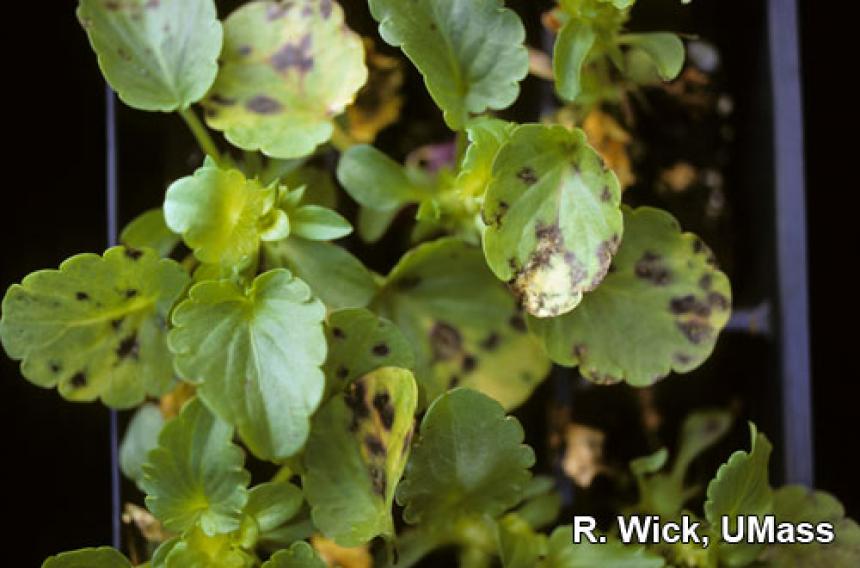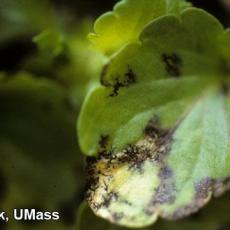Leaf blights that start with a half-circular brown spot at the edge of the leaf can develop into stem cankers. Severe losses can occur on both seedlings and mature plants ready for sale. Fungal spores are spread by water splashed from overhead irrigation or rainfall. Remove infected plants and discard. Drench adjacent plants with a fungicide. Champ, Champion, Kocide, KOP-Hydroxide, Bayleton,Cygnus, Eagle, Fosphite, Heritage, Systhane, and Manzate 80 WP are registered for outdoor ornamentals and Colletotrichum diseases. Start with healthy transplants in a well drained soil, provide balanced nutrition, and avoid over-watering. Grow plants on raised benches to prevent contamination from native soil and start with sanitized pots, flats, and benches.
Optimum conditions for disease development include long periods of 90-100% relative humidity with nighttime leaf-wetting and daytime drying. High levels of disease may arise from only a few infected plants, since each lesion produces large numbers of conidia. Dissemination of conidia is primarily by water- although wind, insects, and workers can also spread the pathogen. Infected seeds and weeds of the family Viola may be sources of inoculum. The fungus overwinters in seed, infected crop residues, or in weed hosts and is very host specific. Apply thiophanate methyl & chlorothalonil (Spectro 90 WDG), chlorothalonil (Daconil Weather Stik), triadimefon (Strike 50WDG) or Bacillus subtilis QST713 (Cease) according to label directions.

